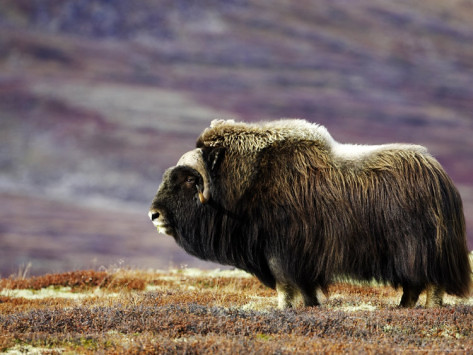
Here are some of the new colourways:
I was asked to do a custom order to represent a whale and I was inspired so from the description came a watercolour, from the water colour came a drill down of pigments needed for the dye job and then after finishing that, I thought “why not dye some on a different blend for the update because it looks amazing”..I’m nothing if not thorough and a bit weird..lol
If you ever want something you cannot find on the shop, please let me know! I am always welcoming custom orders! I looooove doing custom orders. They make me work and look at things in a different way and I love that!
Just have a browse on the IxCHeL shop right here: https://ixchel.com.au/products/tundra
There might not be a lot of animals still around whose origins date from the ice age to tell the tale and be around for us to marvel at them and their unique and magical being, but tonight’s update is one of them: QIVIUT! Or Musk ox as they are also known as ox Qiviut is the name of the wool that comes off of the Musk Ox, a gentle giant of a creature often found in Alaska, but also in Norway, more specifically in the Dovrefjell National park. Once hunted to the brink of extinction, Musk Ox are now considered to have the most precious, softest fiber in the world. Eight times warmer than wool and finer than cashmere, qiviut is rare and it is one of the most luxurious fibres you can choose for a garment.


The softness of Qiviut is something that must be touched to be believed! Qiviut is not only soft, it is also non-irritating to the skin, and is very durable - garments made from it are worn for years and can be hand washed in mild detergent. It retains warmth even when wet.
The lightweight fibre preserves heat in the winter, while also providing cool, breathable comfort in warmer weather. This fibre has been carefully gathered by hand and no animals were harmed in the gentle shedding of it. This fibre generally sells for anywhere between $70-$100/28grams/oz, and skeins of yarn often sell for a lot more!! Fibre count is 100s+ (12-15 micron)!!!

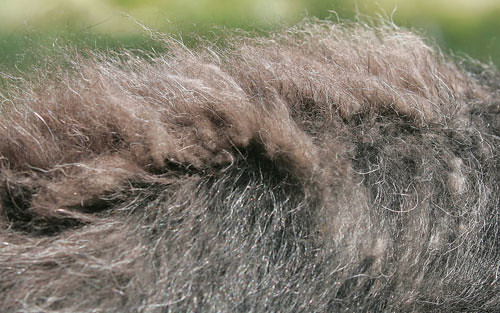
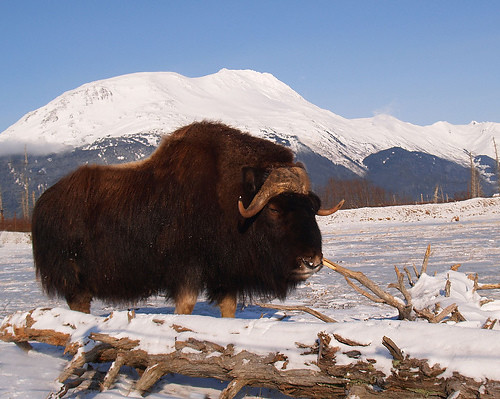
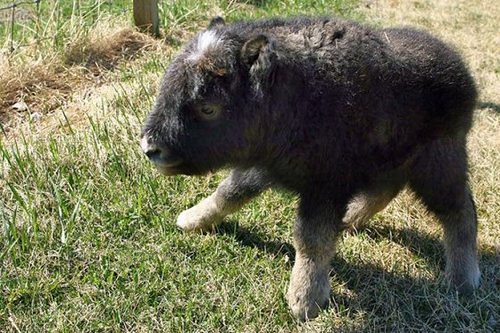


The mighty muskox (Ovibos moschatu) is a survivor from the ice age. Possessing powerful curved horns, which hang down like side bangs from a helmet-like skullcap, muskoxen are actually more closely related to sheep and goats than to cattle and oxen (although all of the above are members of the Bovidae family).
Adult muskoxen weigh from 180 to 400 kg (400 to 900 pounds) but they look much larger on account of their thick coats and large heads. Once muskoxen proliferated throughout the northern hemisphere alongside woolly mammoths, but hunting and habitat loss caused them to retreat further and further into the remotest parts of the north until the end of the nineteenth century when the animals could only be found in the unpopulated wilderness and empty islands of northern Canada and deep in the arctic vastness of Greenland. In these remote locations tiny herds of one to two dozen muskoxen still subsist on grasses, willows, lichens and moss while contending with terrible arctic predators and fearsome cold.
Fortunately the muskox is provisioned with fearsome horns and doughty neighbours to fend off polar bears and wolves. The herd is capable of assembling in a ring formation with horns outward to stand off wolves and ice bears (although such a strategy works less well against humans with our projectile weapons). To fight the cold, the muskoxen have fat reserves and one of the most remarkable insulating coats in the animal world.
A muskox’s coat is divided into two layers: a long stringy layer of coarse outer wool and an inner layer of soft warm undercoat called qiviut (this Inuit word now primarily denotes muskox wool but it was once also used to refer to similarly soft warm inner down of arctic birds). Qiviut is one of the world’s premier luxury fibres: it is allegedly 8 times more effective at insulation than sheep’s wool and yet is softer than cashmere.
The Musk Ox survived when the other greats of the Pleistocene – woolly mammoth, mastodon, sabertoothed cats, giant sloth – all went away. And it returned to Alaska by way of New York Harbour. Now, it turns out, the musk ox could again be the great survivor in our new Arctic age of extinction. Ross MacPhee, a curator in the department of mammalogy at the American Museum of Natural History in New York City, says the musk ox’s homogenous genetic makeup suggests it has been through population stress before and can survive boom-and-bust cycles.
“What we find with living musk oxen is they’re not exactly clones, but they’re so amazingly similar that there’s only one explanation,” MacPhee says. “And that explanation is that they had to have had a very severe pinch on their populations. We estimate that that happened about ten thousand years ago.” But that doesn’t mean it’s all good news for the cold-weather beast, which is most closely related to goats and sheep and can weigh up to 800 pounds. The pace of these changes could challenge even an animal as resilient as the musk ox, scientists say.
Brendan Kelly, an Arctic ecologist and research scientist for the National Oceanic and Atmospheric Administration, says all Arctic species are currently endangered by the rapid speed of climate change. “For organisms to adapt – whether it’s changing body size, or changing the timing that they have their calves, and hence can match when the plants are most nutritious – it really depends on the rate of the environmental change relative to the generation time of the organism,” Kelly says. “So if there’s a really, really rapid environmental change, it’s very hard for there to be an adaptive response.”
As I was reading about Musk Ox I found out that all of the muskox at the Myskoxcentrum in Härjedalen, Sweden, came from Ryøya, near Tromsø, Norway. What?!? Muskox on Ryøya? I knew about the Dovrefjell group and an attempt to introduce muskox on Svalbard, but I had never heard of a group in northern Norway. The search was on.
It turns out that there is a flock of more 40+ animals now running around free on a small island named Ryøya off the coast of Tromsø. NRK’s Ut i naturen television program made a 24-minute show about “Moskusøya” (“Muskox Island”) in 2006. Unfortunately the show is in Norwegian, but even if you don’t speak Norwegian, it’s still worth watching for a while if you want to see muskox running around and scientists trying to catch them. In the Ut i naturen program, we also get to see some historic television clips from the 1960s when the muskox first came to Troms.
In 1969, 25 muskox calves arrived in northern Norway via boat from Greenland. The idea was to raise muskox for their wool as domesticated livestock. The University of Fairbanks in Alaska had some kind of research project related to muskox husbandry (I haven’t looked into that yet) and the idea was transferred to Norway.
The undercoat wool of muskox, known as qiviut, is a highly valuable wool: it is warmer than wool, finer than cashmere and hypoallergenic. Sounds like the perfect winter clothing material, except that muskox are pretty rare and not widely domesticated – which makes it a very, very expensive material
In 1969, the herd was established at a farm in Bardu with the hope that eventually every farm in the area could have 2-3 muskox for a meaningful supplementary income. But by 1975, calls for the end of muskox experiment were being made. According to media reports, a hunter was killed by a muskox and the muskox population was being devastated by a virus (hmmm, sounds familiar, right?). So in 1976, the herd was moved to northern Troms, and five years later, the Tromsø University is taking care of them to preserve the species.
The Department of Arctic and Marine Biology took over the herd and moved them to Ryøya to study their behaviour and adaptation as arctic animals. Muskox as livestock in Norway didn’t work out, but who knows what the future holds. The Qiviut are still here.
While the scientists herd the muskox to collect measurements and/or for transportation to the overwintering station on the mainland, they quickly pull out the qiviut, which they sell to support their research. Qiviut is a bonus of having muskox in Norway — if you can catch them.
Well , don’t you worry I caught some of it for you to support the musk ox population growing not only on the American continent but also in other habitats that are good for them. This will enable the species to grow, get stronger, adapt and hey, probably outlive us all, since they already did that to the woolly mammoth.
Don’t worry, if I EVER find a woolly mammoth, I will share its’ wool with all of you …
As far as rare breeds are concerned and especially with the musk ox, they are being monitored by scientists to see what is happening with the herds and what their health is. A musk ox can be up to two metres long. The animal is characterised by a long and dense coat and wide hooves and drooping horns. Like domestic cows, musk oxen are ruminants, and allow their food to ferment in a separate stomach prior to digesting it. Musk ox are well protected against the cold Arctic winter. They have two layers of hair--a thick undercoat and heavy outer coat of long, dark hair. Musk ox are a key species in the Arctic, but populations are in decline. A new method is helping scientists to monitor these animals in often difficult to reach, remote locations.
Musk ox are found throughout the Arctic, in Greenland, Canada, Alaska, Norway, and Russia. And some local populations are thriving.
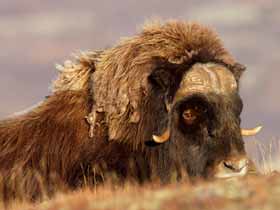
Mosbacher and his colleagues analysed hair from ten Greenlandic musk ox and discovered that the animals’ diet is directly linked with their environmental surroundings and the number of calves born. Fewer calves were born during and after particularly snowy winters.
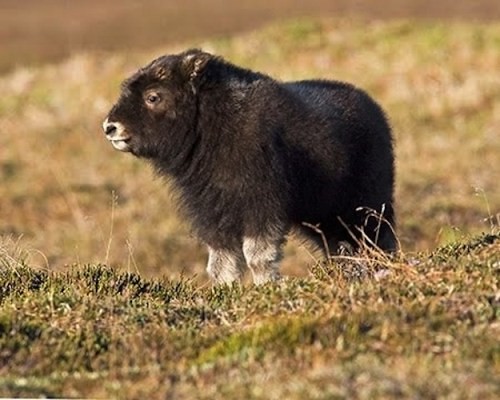
The scientists analysed the stable isotope composition of the hair, which indicates the type of food that the animals ate in recent years. An isotope is a specific version of an element and every element has several different isotopes. A stable isotope means that it is not radioactive and does not change into another isotope by radioactive decay.
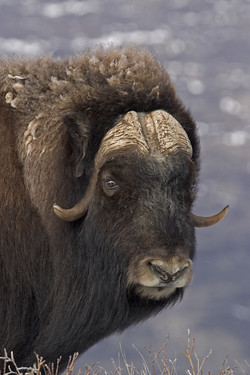
Big fluffy hugs










No comments:
Post a Comment